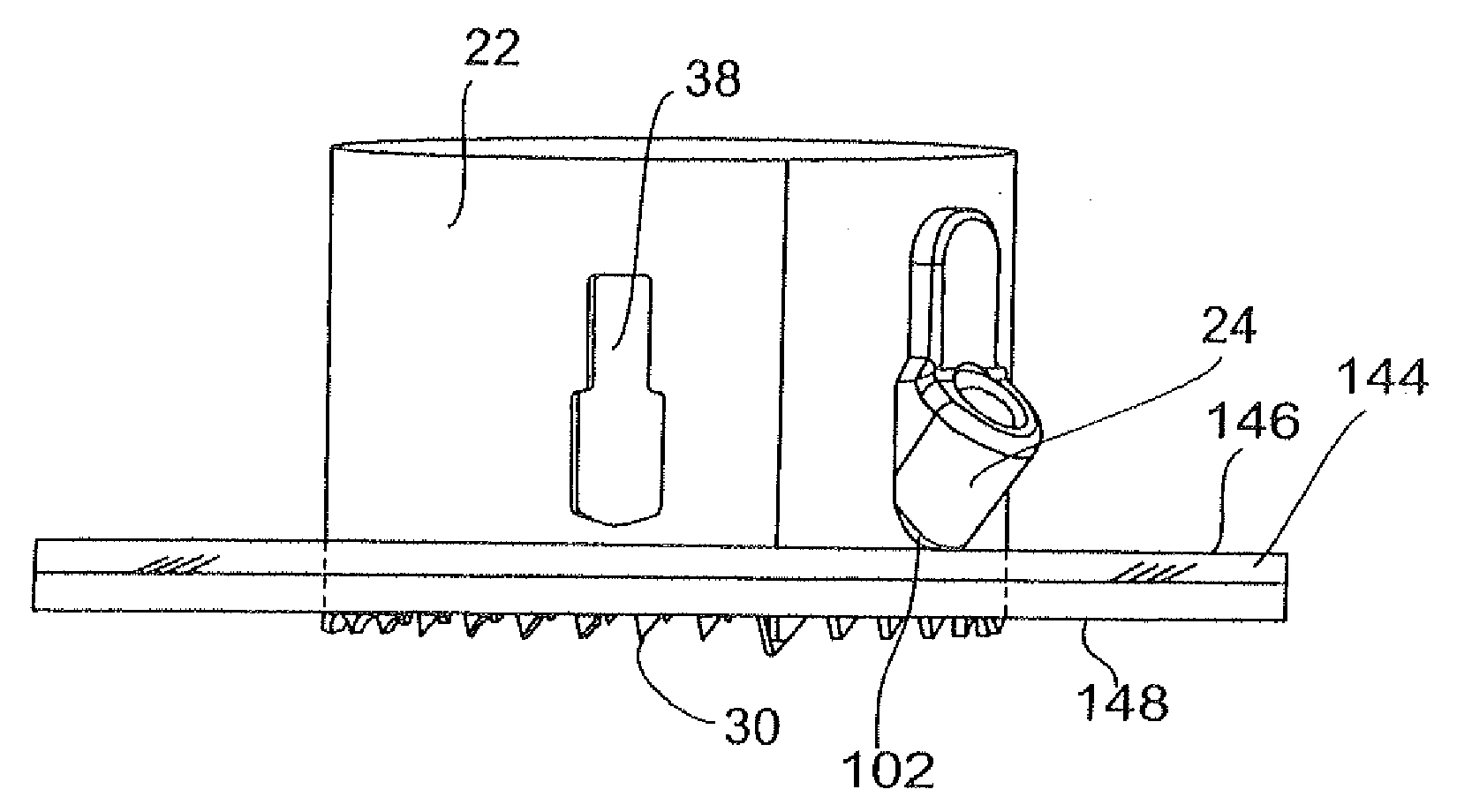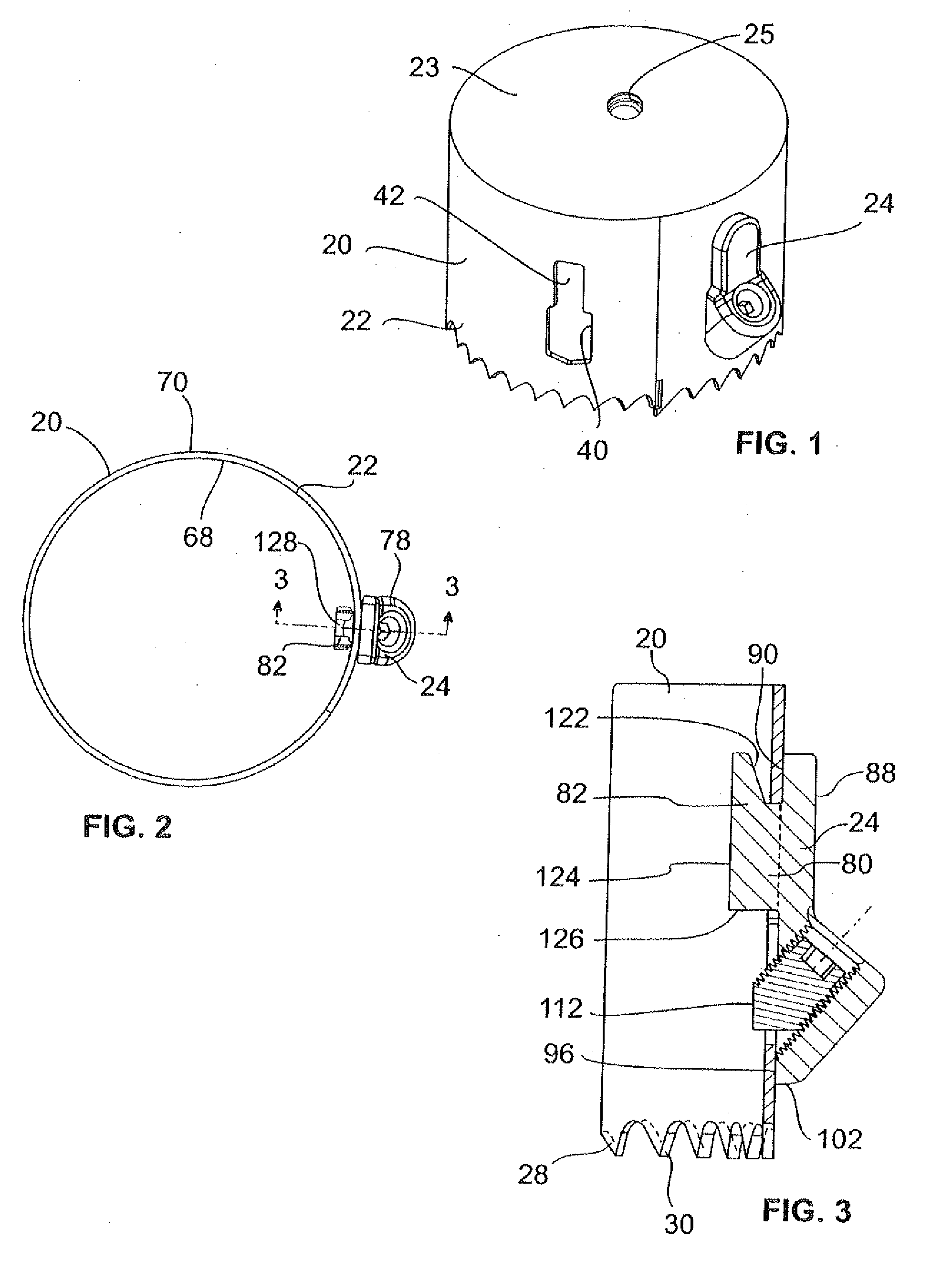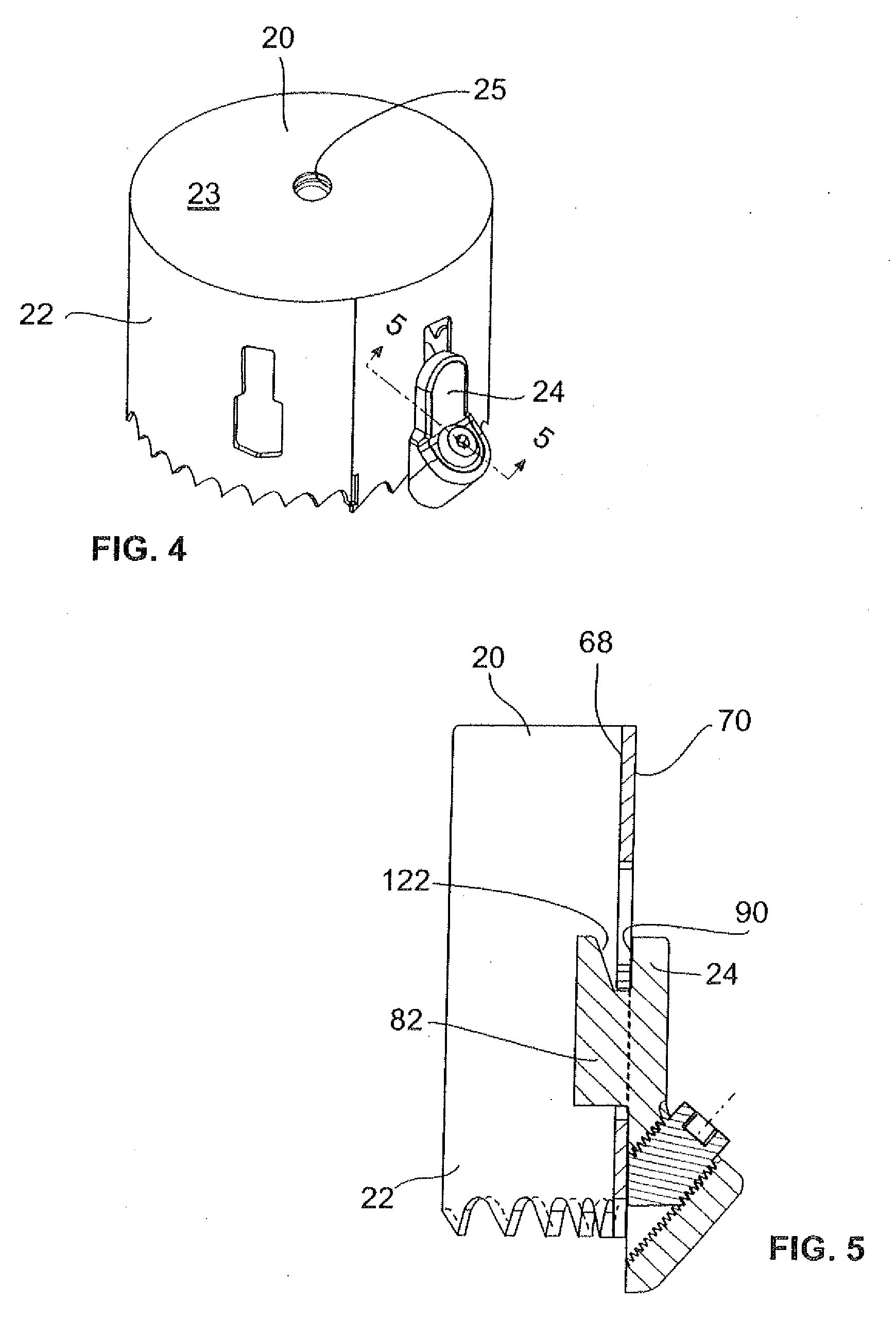Hole saw with depth stop
a technology of depth stop and hole saw, which is applied in the field of hole saw with depth stop, can solve the problems of large components, increased production costs, and increased production costs, and the effect of increasing the number of holes
- Summary
- Abstract
- Description
- Claims
- Application Information
AI Technical Summary
Benefits of technology
Problems solved by technology
Method used
Image
Examples
first embodiment
[0040]The depth stop 24 is mounted to the blade 22. the depth stop 24 is shown in FIGS. 7-9. The depth stop 24 has a distal end 74 and a proximal end 76. The depth stop 24 includes a main body 78, an abutment portion 80 (see FIG. 9) extending from the main body 78 and a retention ear 82 extending from the abutment portion 80. The main body 78, the abutment portion 80 and the retention ear 82 are integrally formed.
[0041]The main body 78 includes a generally planar portion 84 and an enlarged end portion 86. The planar portion 84 includes an outer surface 88, an alignment surface 90 opposite the outer surface 88, and a peripheral edge 92 extending between the outer surface 88 and the alignment surface 90. The peripheral edge 92 is generally rounded at the proximal end 76 of the depth stop 24.
[0042]The enlarged end portion 86 extends from the planar portion 84 and is formed from a generally tubularly-shaped wall 94 generally having an interior surface 98, an exterior surface 97, and an ...
second embodiment
[0045]the depth stop 24a is shown in FIGS. 10-15. The depth stop 24a is similar to the depth stop 24 shown in FIGS. 7-9 with the following exceptions. Elements of depth stop 24a which are similar to elements of depth stop 24 are not described again herein and have been identified with the same reference numerals.
[0046]Unlike the peripheral edge 92 of the depth stop 24 which is rounded, the peripheral edge 292 of the planar portion 84 of the depth stop 24a is faceted at the proximal end.
[0047]The enlarged end portion 86 of depth stop 24a includes a wall 294 which defines the locking member passageway 104. Unlike the exterior surface of the wall 94 of depth stop 24 which is generally smooth and rounded, the exterior surface of the wall 294 of the depth stop 24a is faceted and includes a plurality of planar surfaces 300a, 300b, 300c, 300d, 300e. Each surface 300a, 300b, 300c, 300d, 300e generally extends parallel to the central axis 110 of the locking member passageway 104. The depth s...
third embodiment
[0057]a hole saw 320 is shown assembled with a depth stop 324 in FIGS. 18-26. For ease of description, the surfaces and elements of the hole saw 320 which are positioned closest to the user when the hole saw 320 is in use are referred to as proximal, and surfaces and elements furthest from the user are referred to as distal.
[0058]The hole saw 320 includes a blade 322 and a backplate 323 which are permanently affixed together such as by welding as is known in the art. A mounting aperture 325, for example, is provided for mounting the hole saw 320 to a driving mechanism, such as an electric hand drill (not shown), for drilling a hole through a workpiece as will be described herein.
[0059]The blade 322 is generally tubularly-shaped and includes a circularly-shaped proximal edge 326, shown in FIG. 24, which is mounted to the back plate 323. The blade 322 also includes a generally circularly-shaped distal edge 328 having cutting teeth 330.
[0060]As shown in FIG. 19, the blade 322 is formed...
PUM
| Property | Measurement | Unit |
|---|---|---|
| angle | aaaaa | aaaaa |
| angle | aaaaa | aaaaa |
| angle | aaaaa | aaaaa |
Abstract
Description
Claims
Application Information
 Login to View More
Login to View More - R&D
- Intellectual Property
- Life Sciences
- Materials
- Tech Scout
- Unparalleled Data Quality
- Higher Quality Content
- 60% Fewer Hallucinations
Browse by: Latest US Patents, China's latest patents, Technical Efficacy Thesaurus, Application Domain, Technology Topic, Popular Technical Reports.
© 2025 PatSnap. All rights reserved.Legal|Privacy policy|Modern Slavery Act Transparency Statement|Sitemap|About US| Contact US: help@patsnap.com



